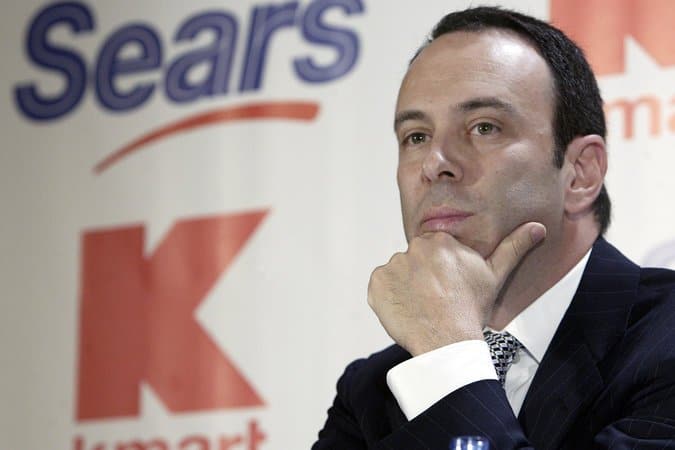
The chief executive of Sears is its largest shareholder and a major lender to the company. Now, he wants to be its savior, after the retailer tried — unsuccessfully — to find buyers for some of its more valuable brands.
The chief executive, Edward S. Lampert, said the hedge fund he controls would be willing to buy Sears’s real estate holdings, its appliance-parts business and the Kenmore appliances brand, among other assets. The proposed deal, outlined by Mr. Lampert to the Sears board in a letter released Monday, would infuse the company with new funds as it tries to pay down billions in debt.
“We continue to see the value in Sears and its underlying assets,” Mr. Lampert said in the letter, “and believe strongly that with an appropriate runway Sears will be able to complete its transformation.”
The offer places Mr. Lampert in an unusual position. In proposing that his hedge fund, ESL Investments, buy some of Sears’s best assets, Mr. Lampert would find himself with a stake in both sides of the deal. Mr. Lampert said he would recuse himself from any board discussions about the transaction, which would require the approval of Sears’s shareholders who are not affiliated with ESL.
The offering represents Mr. Lampert’s latest attempt to salvage a once-iconic brand in Sears. The company has been in a precipitous decline for several years, as lower-end shopping malls struggle to attract shoppers and big-box rivals and e-commerce companies gain market share. Even as many other department stores have stabilized their business, Sears has continued to struggle. Analysts have warned that the company is at risk of defaulting on its debt.
Continue reading the main story
RELATED COVERAGE
Sears Agrees to Sell Craftsman to Stanley Black & Decker to Raise Cash JAN. 5, 2017
Department Stores, Once Anchors at Malls, Become Millstones JAN. 5, 2017
Mr. Lampert offered to pay Sears $500 million for its appliance-parts and home-services units, but did not mention a price for Kenmore or the real estate. He noted in his letter that the company had been trying to sell the assets for nearly two years, but had failed to reach a deal with potential buyers on “acceptable terms.”
The proposal to acquire Kenmore and the other business units would leave the already scaled-back retailer even more diminished, leading some to question whether Mr. Lampert has been seeking to strip out the most valuable assets in the event the company files for bankruptcy.
“Today’s news simply looks like another pre-emptive move by insiders to secure the most valuable assets,” Bill Dreher, an analyst at Susquehanna Financial Group, wrote in a research note late Monday.
An alumnus of Goldman Sachs, Mr. Lampert has tried to revamp the company through a series of financial engineering, store closings and asset sales.
In recent years, Sears has spun off or sold a variety of brands, including Sears Hometown, the apparel maker Lands’ End and its Craftsman tool brand.
In 2015, Mr. Lampert sold more than 266 Sears and Kmart properties for $3 billion to a publicly traded real-estate investment group called Seritage Growth Properties.
At the time, Mr. Lampert was not only the chief executive, but also the chairman for Seritage. The sale led to a lawsuit, in which shareholders argued that there had not been an independent, fair valuation of the properties and that there were multiple conflicts of interest. The lawsuit was settled for $40 million.
“He has been taking productive assets out of the company since Day 1,” said Mark A. Cohen, a former Sears executive who is now director of retail studies at the Columbia Business School. ”He is going to be getting down to peeling paint off the wall soon.”
As the largest shareholder in Sears, Mr. Lampert’s hedge fund stands to lose out if the company ends up in bankruptcy.
But he could pare some of those losses if Kenmore, a well-known appliance brand, were to thrive outside of Sears.
Last month, Sears was able to reduce some pressure through the announcement of a so-called debt exchange deal, which could allow the retailer to pay off some debt by converting it to stock. But analysts warn that the company is burning through more than $1 billion of cash a year and its sales continue to decline. The company lost $562 million in the fiscal year that ended Feb. 3, according to Moody’s Investors Service.
Raising cash through asset sales will not only help the company stay afloat with its debt and pension obligations, it could also help ease potential concerns among vendors that are critical to Sears’s survival. Toys “R” Us partly blamed nervous vendors for tipping it into bankruptcy last year.
“It is paramount that Sears enhances its liquidity profile,” said Christina Boni, a senior credit analyst at Moody’s.
Mr. Lampert said he was interested in acquiring the company’s remaining real estate, which was not sold in the 2015 deal with Seritage.
If Mr. Lampert and the Sears board strike a deal, the company would still own more than 500 Sears stores, an auto-repair business, a credit card unit and about 400 Kmart stores.
On Monday, the Sears board said a special committee of independent directors would evaluate Mr. Lampert’s proposal.
The company’s share price surged 7.6 percent on Monday to $3.24. Three years ago, the company stock was trading at $41.13.
“We are very enthusiastic about our ownership interest in Sears and its future,” Mr. Lampert said in his letter.
